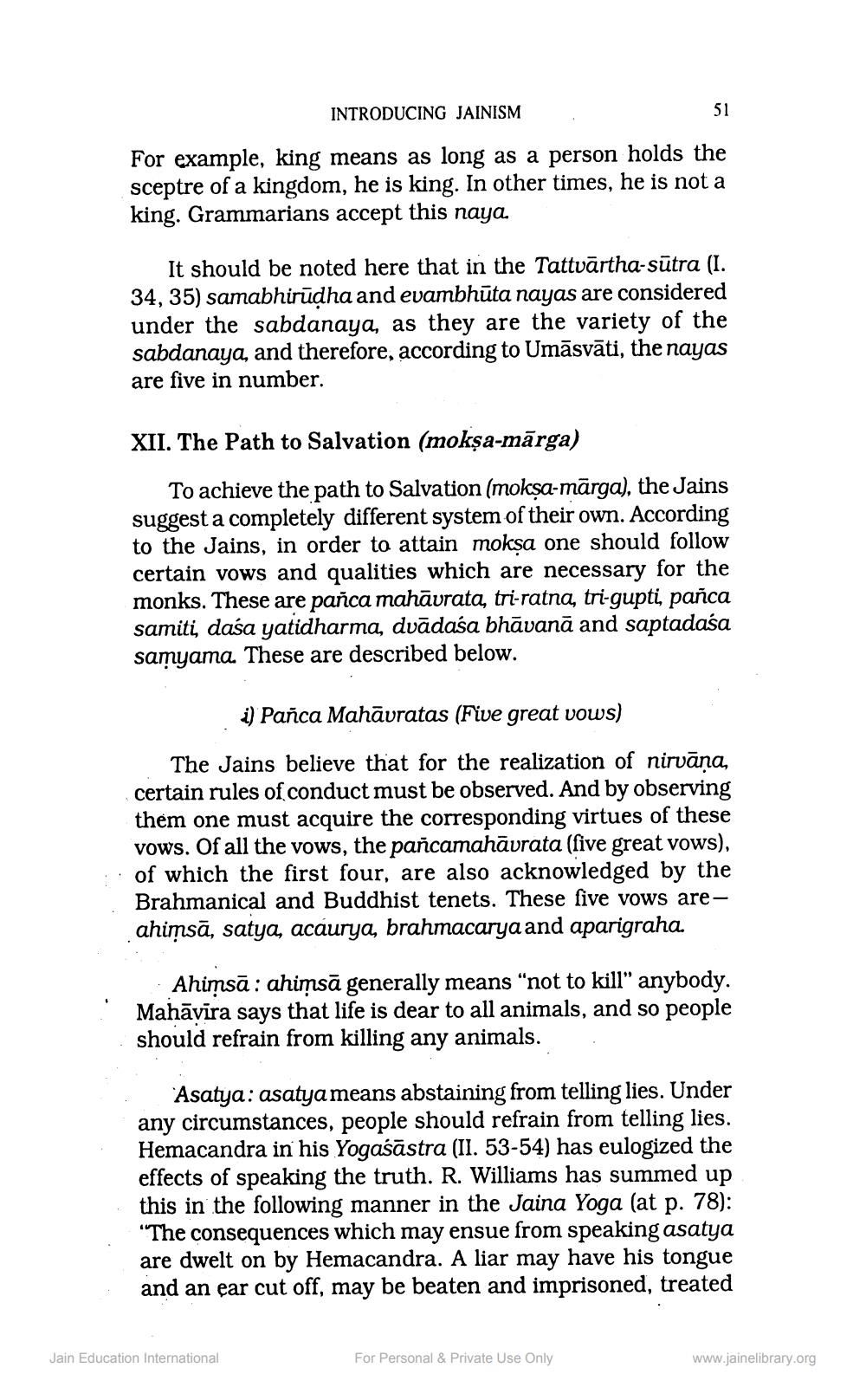________________
INTRODUCING JAINISM
For example, king means as long as a person holds the sceptre of a kingdom, he is king. In other times, he is not a king. Grammarians accept this naya.
It should be noted here that in the Tattvārtha-sūtra (I. 34, 35) samabhirūdha and evambhūta nayas are considered under the sabdanaya, as they are the variety of the sabdanaya, and therefore, according to Umāsvāti, the nayas are five in number.
XII. The Path to Salvation (mokşa-mārga)
To achieve the path to Salvation (moksa-marga), the Jains suggest a completely different system of their own. According to the Jains, in order to attain moksa one should follow certain vows and qualities which are necessary for the monks. These are pañca mahāurata, tri-ratna, tri-gupti, pañca samiti, daśa yatidharma, dvādaśa bhāvanā and saptadaśa samyama. These are described below.
i) Panca Mahāuratas (Five great vows)
The Jains believe that for the realization of nirvana, certain rules of conduct must be observed. And by observing them one must acquire the corresponding virtues of these vows. Of all the vows, the pancamahāvrata (five great vows), of which the first four, are also acknowledged by the Brahmanical and Buddhist tenets. These five vows areahiņsā, satya, acáurya, brahmacarya and aparigraha.
· Ahimsā: ahimsā generally means “not to kill" anybody. Mahāvīra says that life is dear to all animals, and so people should refrain from killing any animals.
Asatya: asatya means abstaining from telling lies. Under any circumstances, people should refrain from telling lies. Hemacandra in his Yogaśāstra (II. 53-54) has eulogized the effects of speaking the truth. R. Williams has summed up this in the following manner in the Jaina Yoga (at p. 78): "The consequences which may ensue from speaking asatya are dwelt on by Hemacandra. A liar may have his tongue and an çar cut off, may be beaten and imprisoned, treated
Jain Education International
For Personal & Private Use Only
www.jainelibrary.org




